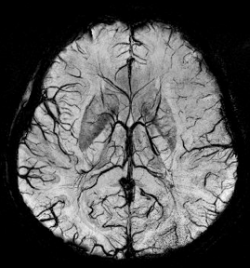Stroke and “Common” Migraine: A Genetic Connection?
We’ve known for a long time that there is a connection between stroke and migraine. But a new study seems to confirm at least a partial genetic basis for that connection. But there are some surprises.
The meta-analyses, published in Neurology earlier this year, compared thousands of cases of migraine along with thousands of cases of stroke and control patients. Their study looked for genetic similarities in the groups with various types of migraine and stroke, especially known genetic characteristics of either disease.
As expected, there was significant overlap.
Now we’ve mentioned the genetic connection between migraine with aura and stroke in the past. But the strongest connection in this study was between two types of stroke and migraine without aura. (That’s right, without aura.)
So what types of stroke had the most overlap?
>> First, large artery stroke. Large artery strokes are a type of ischemic strokes, and it’s just what it sounds like – a large artery (which brings blood to the brain) is blocked.
>> Second, cardioembolic stroke. This type, also an ischemic stroke, occurs when the heart pumps impurities (clots) into the cerebral vessels (blood vessels that supply the brain), causing a blockage and damaging brain tissue.
Recent research has allowed us to differentiate further between these and other types of stroke genetically, and so comparisons like these, although by no means precise, are becoming easier.
For now, this study further confirms that there is at least some genetic basis for the connection between stroke and migraine without aura – and so perhaps with most or all types of migraine. Further research needs to be done, but research needs to go beyond what seems to be the common tendency – to focus on migraine with aura.
For most of us, the advice remains the same – don’t panic, but watch your symptoms, get the best migraine treatment you can, and do what you can to lower your risk of stroke and heart disease.
Selected sources:

